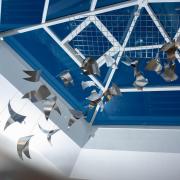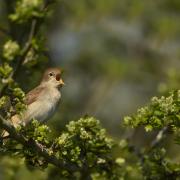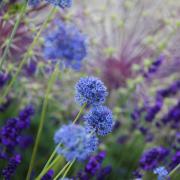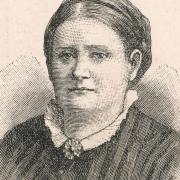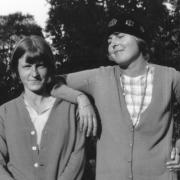Sussex Life photographer Jim Holden travelled thousands of miles over 18 months, capturing the county and country's meadows for a new book which has captivated King Charles.
While the many meadows photographer and Sussex Life stalwart Jim Holden visited over 18 months were hay, there was little of the proverbial sunshine associated with its making.
In fact, he endured ferocious winds, blankets of snow, and days of drizzle and bone-chilling rain while photographing the plants, people and places that shape classic meadows for a new book.
From 'grinning' Hebridian sheep and 'rude' Riggit Galloway cattle (well he is poking his tongue out) and artists, artisans and meadow experts, Jim clocked up thousands of miles over every season capturing the images.
Now they have been published in Meadow, an insightful guide to the iconic British Isles meadows by Iain Parkinson, Head of landscape and horticulture at Wakehurst, the wild botanical garden in Sussex that's part of Kew Gardens.
With a foreword by King Charles, Meadow explores the surviving hay meadows, which are the natural equivalent of our churches, and castles giving a glimpse into the past, long before chemical fertilisers and herbicides were used.
'These biodiversity hotspots are intrinsic to our cultural heritage,' King Charles wrote. 'Over 30 first-person accounts touch on everything from wildflower and grassland restoration, basket making and weaving, pollinators and birdlife, water and soil to hedge laying, grazing and archaeology.'
'It is here where the stunning photography by Jim Holden brings these fascinating stories to life.'
'It was an incredible adventure,' Jim, 53, who lives in East Hoathly, says. 'Many of the meadows I have visited have been within a day’s striking distance of my Sussex home, and my little camper van has certainly clocked up the miles in my pursuit of these enigmatic grasslands.
'When I arrived at each meadow with camera in hand it was all too easy to become overwhelmed by the sheer diversity of colour, shape, pattern, sound and movement. Meadows provide an astonishing level of sensory input from all quarters.
'At the beginning of the project I would be seen bouncing around a meadow trying not to miss a thing, but over time I found a far better approach: to find a likely spot to just stop, sit and wait. The meadow would soon find me, and everything would be revealed. It was magical.
'I have learned a great deal about meadows and their enthralling idiosyncrasies. One long afternoon in West Sussex, for instance, a futile search for meadow goat’s beard, Tragopogon pratensis, left me scratching my head until the obvious – with hindsight – significance of its common name, ‘Jack-go-to-bed-at-noon’, finally dawned on me. A humbling lesson learned, and I made sure to return early the next morning to capture my subject complete with a ladybird.
'It is so important to raise awareness about the increasing pressures that meadows are under and the impact these have on the flora and fauna they support. Visiting so many classic and special hay meadows has been an unforgettable experience, and brought home to me that meadows are just as much about the people as the plants.'
Basket Weaver

Ruby Taylor in her Lewes studio, twisting and binding the long, strong plant fibres. Dried grass cut from the meadow gives flexible fibres; the baskets made from it are tactile and fragrant.
Willow Sculptor

Willow artist Tom Hare challenges our perception of scale in the landscape with his sculpture of goat’s beard, Tragopogon pratensis. Its alternative name, ‘shepherd’s clock’, is a reference to its remarkable seed head.
Great Dixter

A haven for beauty and biodiversity, the gardens and wider landscape at Great Dixter provide spaces for quiet contemplation whatever the season.
Roadside Verge at Battle

Keith Datchler OBE at one of his favourite Sussex roadside verges. These habitats are under considerable pressure due to priorities for road safety and budget constraints, despite being some of the UK’s richest wildflower habitats. In East Sussex, a small yellow flower sign identifies some verges as designated special conservation areas.
Sheep

Hebridean sheep have established a reputation as being one of the best breeds for the management of delicate ecosystems such as traditional hay meadows.
Licking Cow

Riggit Galloway cattle thrive in all conditions on unimproved pasture, making them ideal conservation graziers. Grazing helps to maintain an open sward structure where seeds can settle, germinate and flourish.
Rolled-up Caterpillar

Crested dog’s-tail grass, Cynosurus cristatus, is the food plant of the larvae of several species of butterfly.
Ladybird on Bud

A ladybird on a closed goat’s beard bud.

Meadow by Iain Parkinson with photography by Jim Holden, £25, Kew Publishing, available direct at https://shop.kew.org/meadow, Amazon and book stores.






